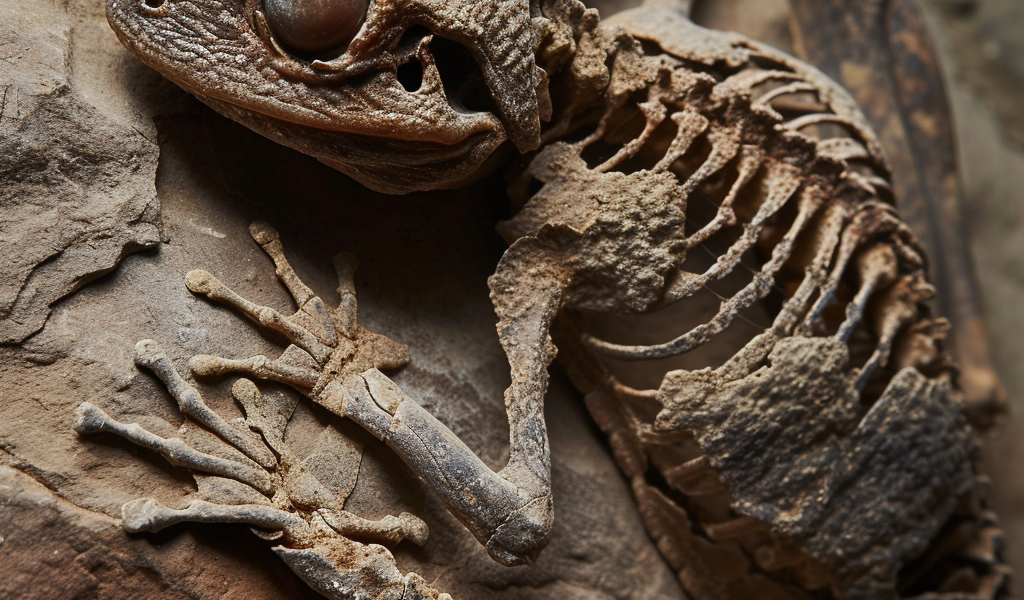Remarkable Fossilized Frog Unearthed in China, Shedding Light on Ancient Reproductive Behavior
A fascinating discovery has been made in the field of paleontology, as scientists have unearthed a remarkable fossilized frog dating back 100 million years. This ancient amphibian, known as Gansubatrachus qilianensis, was found in northwest China and is believed to be the oldest known gravid frog specimen ever discovered.
What makes this find particularly exceptional is the fact that the frog was found with a belly full of eggs, shedding light on its reproductive behavior during the Cretaceous period. The presence of the eggs suggests that the female frog was in a ‘gravid’ state, indicating she was ready to lay her eggs.
According to the researchers, the fossilized frog provides valuable insights into the reproductive strategies of ancient amphibians. Through high-resolution skeletal modeling and egg composition analysis, the scientists were able to determine that the frog was still skeletally immature, indicating its ability to reproduce before reaching full physical maturity.
This discovery challenges previous assumptions about the reproductive capabilities of ancient frogs and toads, offering a unique glimpse into the evolutionary history of these fascinating creatures. Lead author Baoxia Du, a paleontologist at Lanzhou University in China, emphasized the significance of understanding the reproductive strategies employed by early frogs, highlighting its importance in unraveling their complete reproductive history.
The rarity of fossilized frogs from the Cretaceous period, particularly those with preserved soft tissues, underscores the exceptional nature of this finding. The researchers utilized computed tomography (CT) scans and X-ray analysis to gain a comprehensive understanding of the gravid frog’s skeletal structure and egg composition, providing unprecedented insights into its reproductive biology.
Overall, the discovery of this ancient gravid frog offers a compelling glimpse into the reproductive behaviors of prehistoric amphibians, enriching our understanding of their evolutionary journey and shedding new light on the fascinating world of ancient frogs.





